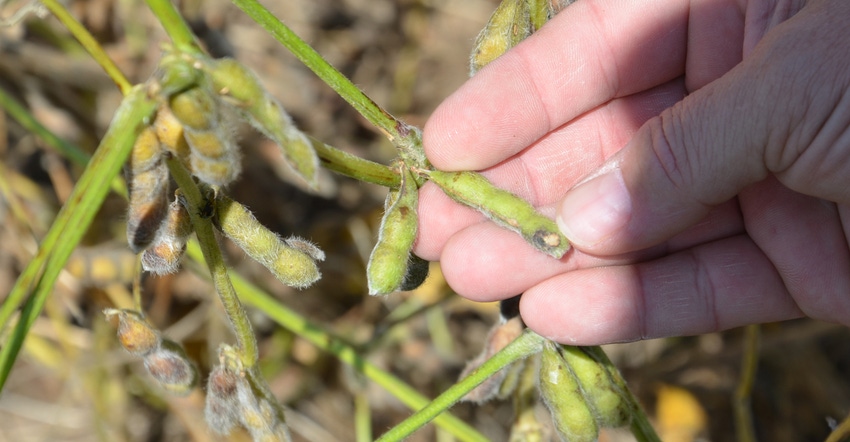July 31, 2019

What insecticides and rates can I use if I feel it’s necessary to treat for stinkbugs before harvest? Is there a required wait time between application and harvest?
The Indiana certified crop advisers panel answering this question includes Betsy Bower, Ceres Solutions, Terre Haute; Traci Bultemeier, Corteva/Pioneer, Fort Wayne; and Dan Ritter, Dairyland Seed, Wabash.
Bower: Most common soybean insecticides can control stinkbugs. Stinkbugs typically require the higher rate range on the label. There is a required wait time before harvest on all insecticides. Some are as low as 18 days and some are as high as 45 days, with the average wait time of 21 days. If you are applying an insecticide less than 21 days before harvest, you already lost the battle with stinkbugs, because they’ve likely already done too much damage.
What is so difficult to manage about stinkbugs is that they typically affect soybeans later than the R3 or R4 reproductive stages, when we are typically scouting for disease and insect pests. So, we don’t find them until it is way too late. If you have had stinkbugs in the past, keep scouting into late R4; early R5, or beginning seed; and into early R6, the full-seed stage.
The R4 stage is defined as plants having pods at least three-fourths inch long in one of the four uppermost nodes of the main stem. Consult the Purdue University Corn and Soybean Field Guide for more help on staging soybean development.
Bultemeier: Stinkbugs need vigilant attention for scouting, as the real damage doesn’t become visible until after harvest; soybean seeds show damage that is a result of stinkbugs piercing through the pod into the bean. Stinkbugs are often clustered near field edges, so solid scouting practices throughout the field are needed.
A typical insecticide application threshold says to treat if an average of one stinkbug per foot of row of soybeans is found at five locations throughout the seed-filling growth stages. Purdue University lists soybean insecticide recommendations that can be used effectively on stinkbugs, along with each product’s postharvest interval, or PHI. There are many options. Most have a PHI range from 18 to 45 days, and the average PHI calls for an application made no later than 21 days before harvest.
Ritter: There are many products commercially available to control stinkbugs. A lengthy list is available through Purdue publication E-77-W online. There is a preharvest interval for all products. Ground versus aerial application becomes a label and economic issue. Is it legal to apply the desired insecticide by air? If so, evaluate the cost of ground and aerial application, keeping in mind crop damage of ground-applied methods.
Editor’s note: There are numerous types of stinkbugs. Green stinkbugs caused the most damage in Indiana soybean fields in 2018. Another variety, brown marmorated stinkbug, can also damage soybeans. The Purdue University Corn and Soybean Field Guide suggests using treatment thresholds established for green stinkbugs for brown marmorated stinkbugs, as well. Infestations are usually more intense around field borders, but experts suggest scouting the entire field.
You May Also Like




